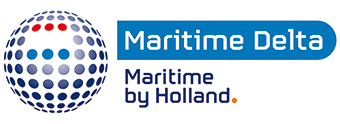Small companies with big ideas need big companies with great courage
The offshore wind industry is growing fast. It is a relatively new sector of energy production that is characterised by innovations and upscaling: the fields are increasing in size, the turbines are becoming higher, and the technical challenges are greater. Offshore oil and gas drilling has been a mature industry for a long time, but it is a really different branch and offers hardly any technical starting points to build on with offshore wind energy.
Gjalt Lindeboom is managing director of Seaqualize and explains: “To realise the ambitious growth scenarios in the field of offshore wind energy, thousands of (turbine)lifts are needed in a short period of time. This can be achieved by making more cranes suitable and extending the lifting season, both of which have a mutually reinforcing effect.”
Inline Active Heave compressor
He continues: “When lifting heavy loads and placing 2 parts on top of each other, accuracy is essential even under harsh conditions. Therefore, you must compensate the movement of the load, and it is for this reason that Seaqualize has invested in the development of an innovative product, an Inline Active Heave Compensator (AHC), which is now ready for its first offshore test. We want to speed up the process and ensure that wind turbines can be built faster, in our opinion this inline AHC, the Seaqualize Delta, can contribute to that development.”
Well known principle
The Delta is based on the principle of spring balance, which is already more than 100 years old and well known in the application of, for example, (office) lamps. A simple system of passive springs is built into the base such that it keeps the rods and the lampshade perfectly balanced in any position. If you would move the base, the lampshade would still want to remain in position. However, there will always be a slight movement if the lampshade due to friction. Because the weight is already so well balanced, this movement can be corrected with a minimum of energy. This balancing principle has been maximised in the Seaqualize Delta, and applied to weights up to 600 tonnes. The required correction can then be carried out with a minimum of energy.
Workability
“March and April are exciting months in terms of weather, as are September and October or beyond. By being able to lift on more days with more, simple cranes, the amount of work done increases enormously. Using the Seaqualize Delta would lead to a tremendous increase in workability, even in the winter months.”
From the idea of controlling the load and weight, a small prototype was developed and then tested with increasingly larger weights.
Gjalt Lindeboom states: “We look at the vertical force (gravity) and combine passive and active compensation to control the motions. What is special is that we only use the energy of roughly ten water cookers to stabilise the 600.000 kg’s, which means that no extra power supply is needed. The patented Seaqualize technology combines a very strong passive system, keeping the full load ‘weightless’ with a small power-efficient active system that precisely positions the load and prevents accidental lift-offs or shock loads.”
Weight of three jumbo’s
“We tested the use from the drawings to the port test, after the first model we started testing with 50 kilos and then with 2 tonnes. In July 2021, we tested the Delta in its new hometown: Rotterdam. Seaqualize held a series of tests, including test loads ranging from 100mT to eventually 660mT. To illustrate: that is the weight of three jumbo 747s that we can hold still on a moving ship. The port test produced a number of results that led to adjustments, which we will test again in early October. After that, we are going to test offshore with Van Oord by placing loads on a fixed platform, and picking up loads from a heaving supply vessel.
After the Delta 600, the plan is to start work on the Delta 1200, able to handle weights up to 1200 tonnes. This weight would target next generation wind turbine components, such as nacelles of 800mT and larger. We target the European and Asian wind farm plans, but also in the USA such tools can contribute to the solution of a practical legal problem.”

A solution for The Jones Act
The Seaqualize Delta enables safe and continuous active quick-lifting from supply barges, needed to circumvent the US Jones Act when building US offshore wind farms. The Delta inline AHC tooling can actively match the motions of a heaving supply vessel, allowing for safe and easy returning of cargo to a supply vessel from a jack-up crane of floating HLV, to free up desk space from equipment or material that is no longer needed.
Show your courage
“I would still like to call on large installation contractors to actively participate in the testing of such innovations. As a smaller company, we can think up and prepare innovations faster and more decisively, but ultimately we need to test them in practice under real conditions, the step after proof of technology.”
For that, innovators need big players in the market who are prepared to run the extra mile and bring innovation to the market by testing new techniques. “My experience is that there are too few large companies like Van Oord that have the courage to take on the challenge of developing this type of technology. Ultimately, we need a ship and a turbine component to test. I am happy with Van Oord; they are willing to take risks and carry out tests. Without such entrepreneurs, it is very challenging for big ideas to develop to great innovations.”





